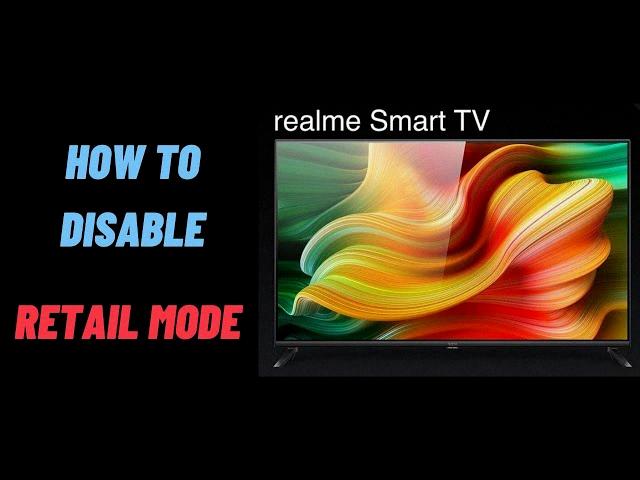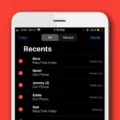Retail mode is a feature commonly found in TVs that are used for display purposes in retail stores. It allows retailers to showcase the functionality and features of the TV to potential customers. However, this mode also limits some of the features and functions that are commonly used in a home setting.
If you have recently purchased a TV that is stuck in retail mode, or if you are a retailer looking to disable this mode on your display units, this article will guide you through the process.
The steps to disable retail mode may vary depending on the design of the TV, but here are some general instructions that should work for most models:
1. Locate the settings menu: Look for a button on your remote control that is labeled “Settings” or “Menu.” Press this button to access the TV’s settings.
2. Navigate to retail mode settings: Once you are in the settings menu, look for an option called “Retail mode” or something similar. This option is usually found under the “System” or “Device Preferences” section. Select this option to access the retail mode settings.
3. Disable demo mode: Within the retail mode settings, you should see an option to disable the demo mode. Select this option and set it to “Off.” This will turn off the demo mode and allow you to use the TV normally.
4. Disable picture reset mode: In addition to the demo mode, some TVs also have a picture reset mode that is enabled in retail mode. This mode resets the picture settings to default values after a certain period of time. To fully disable retail mode, make sure to also turn off the picture reset mode.
5. Save your changes: After making the necessary changes, navigate to the option to save or apply the settings. This will ensure that the changes you made take effect.
It is worth noting that some TVs may require a specific button combination or a different sequence of steps to disable retail mode. If you are unable to find the retail mode settings or encounter any difficulties, refer to the user manual of your TV or contact the manufacturer for further assistance.
Retail mode is a useful feature for showcasing TVs in a retail setting, but it may limit some of the features and functions that are commonly used at home. By following the steps outlined in this article, you should be able to disable retail mode and use your TV normally.
How Do I Get Out Of Retail Mode?
To exit retail mode on an Android device, follow these steps:
1. Go to the Settings menu on your device.
2. Look for the “System” option and tap on it.
3. Scroll down and find the “Retail mode settings” or “Device Preferences” option, depending on your device.
4. Tap on it to access the settings related to retail mode.
5. Within the retail mode settings, you should see options like “Demo mode” and “Picture reset mode.”
6. Set both the “Demo mode” and “Picture reset mode” to Off. This will turn off the retail mode on your device.
7. Once you have made the changes, exit the settings menu.
If you are unable to find the retail mode settings under “System,” try looking for it directly in the main settings menu. The location may vary depending on the device’s manufacturer and software version.
Note: Retail mode is a feature designed for store displays, and it restricts certain functionalities on the device. By turning off retail mode, you will regain full control over your device’s settings and features.

What Does Retail Mode Do?
Retail mode is a feature that is commonly found on electronic devices, particularly retail display units. When enabled, retail mode transforms the device into a demo or showcase mode, allowing potential customers to interact with the device and explore its features without making any permanent changes to its settings or data.
The primary purpose of retail mode is to provide a hands-on experience to customers, helping them make informed purchase decisions. By showcasing the device’s capabilities, potential buyers can get a feel for its performance, user interface, and functionality.
Here are some key features and benefits of retail mode:
1. Demo Mode: Retail mode allows the device to run in a simulated environment, providing a demo experience to customers. This can include pre-loaded content, such as videos, images, or interactive tutorials, to showcase the device’s capabilities.
2. Locked Features: Retail mode often restricts certain features or settings that are not necessary for a demo experience. This prevents users from inadvertently making changes that could affect the device’s demonstration or functionality.
3. Automatic Updates: When retail mode is enabled, the device is typically set to automatically update its software over-the-air (OTA). This ensures that the device stays up-to-date with the latest features, bug fixes, and security patches.
4. Battery Thresholds: Retail mode takes into account battery thresholds to avoid disrupting the customer experience. It will schedule and prioritize OTA updates during periods when the device has sufficient battery power, minimizing the risk of interruptions during demonstrations.
5. Device Security: Retail mode often incorporates security measures to protect the device from potential misuse or tampering. This can include password protection, restricted access to certain settings or apps, and the ability to remotely wipe the device’s data if necessary.
To summarize, retail mode is a specialized feature that transforms a device into a demo unit, allowing potential customers to explore its features and performance without making any permanent changes. It provides an interactive and informative experience, while also ensuring that the device stays up-to-date and secure.
Why Is My TV Going Into DEMO Mode?
There can be several reasons why your TV is going into DEMO mode. Some of the common reasons include:
1. Retail Display: TVs are often set to DEMO mode in retail stores to showcase their features and functionalities. This is done to attract customers and demonstrate the TV’s capabilities.
2. Factory Settings: Sometimes, when you first set up your TV or after a factory reset, it may default to DEMO mode. This is because the TV is programmed to start in DEMO mode as a default setting.
3. Power Interruptions: In some cases, power interruptions or fluctuations can cause the TV to reset to its default settings, including DEMO mode. This can happen if the TV’s power supply is interrupted or if there is a temporary power outage.
4. Software Updates: Occasionally, after a software update, the TV may revert to DEMO mode. This can happen if the update alters the TV’s settings or if it requires a reset to apply the new software.
5. User Error: In some instances, unintentional actions by the user can trigger the TV to enter DEMO mode. This could involve accidentally pressing specific buttons on the remote control or on the TV itself that activate the DEMO mode.
It is important to note that different TV models have different methods to disable DEMO mode. It is recommended to consult the TV’s user manual or contact the manufacturer’s customer support for specific instructions on how to disable DEMO mode for your particular TV model.
Conclusion
The retail mode on a TV is a feature designed for retailers to showcase the functionality and features of the TV to potential customers. However, it also limits some of the features and functions commonly used in a home setting.
If you wish to turn off the store demo mode on your TV, the steps may vary depending on the design of the TV. Generally, you can navigate to the settings menu and look for options related to retail mode or demo mode. From there, you can disable the demo mode and picture reset mode to regain full control over the TV’s features and settings.
It’s important to note that when retail mode is enabled, the device may be set to automatically update over-the-air (OTA) without user interaction. This means that the TV may download, reboot, and install updates without your consent, although it typically respects battery thresholds.
If you encounter any difficulties or need specific instructions for your TV model, it is recommended to consult the TV’s user manual or contact the manufacturer’s customer support for further assistance.




